ASM Alert - Earth Observation for Mining Detection
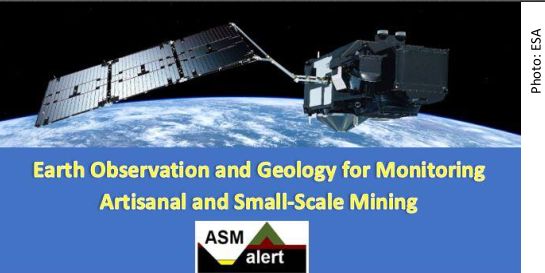
OBJECTIVE
The ASM-Alert project is motivated by the need to address the environmental, human rights, social, economic, and legal aspects associated with artisanal & small-scale mining (ASM) in general, and in the Venezuela part of the Guiana Shield in particular.
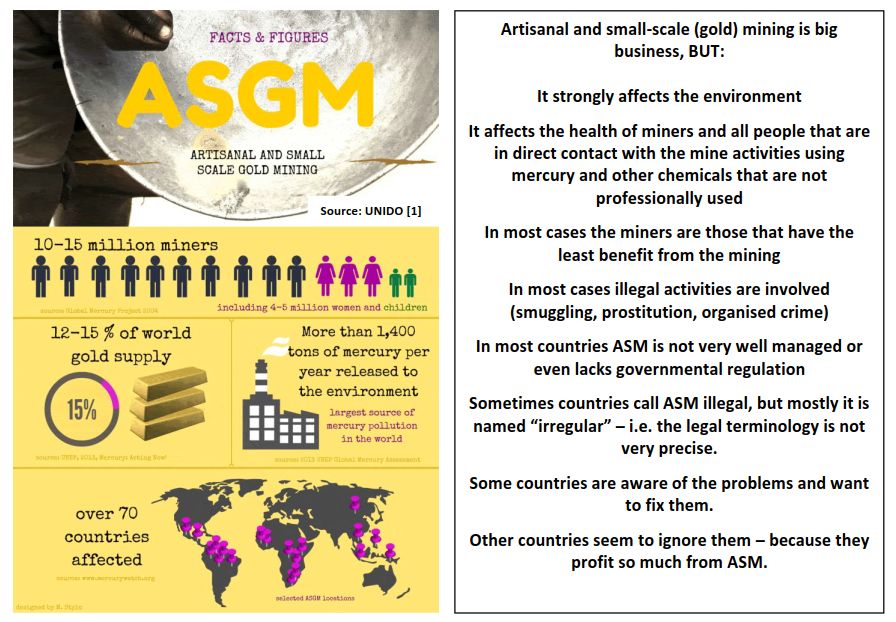
The overall objective of the ASM-Alert project is to contribute towards containing and overcoming the negative effects of ASM. More specifically the project aims to a) implement an easy-to-use ASM monitoring and alert system for stakeholders on all levels - from local communities to international organisations -, b) demonstrate and validate the use of the system and c) make stake-holders aware of the benefits in using the ASM-Alert tool.
INITIAL FOCUS: Venezuela
While the project is expected to be expanded to cover the wider Guiana Shield the initial focus from July 2021 through June 2022 has been on Venezuela.
As Wouter Veening, Chairman of the Institute for Environmental Security (IES), explains, “The situation in Venezuela is very serious and extremely complicated”.
The VALUE: The value of the selected AOI is that Venezuela is a mega biodiversity country and an important part of the Amazonian region, which plays a crucial role in regulating the global climate. As with biodiversity in Colombia, Brazil, and the whole of the Guiana Shield, Venezuela is home of unique species of fauna and flora. One of the areas, which is of great importance to the whole world is the Canaima National Park - a World Heritage site - spread over 3 million ha in south-eastern Venezuela reaching the borders with Guyana and Brazil. In addition this area is the home of several indigenous people, residing in and protecting this heritage.
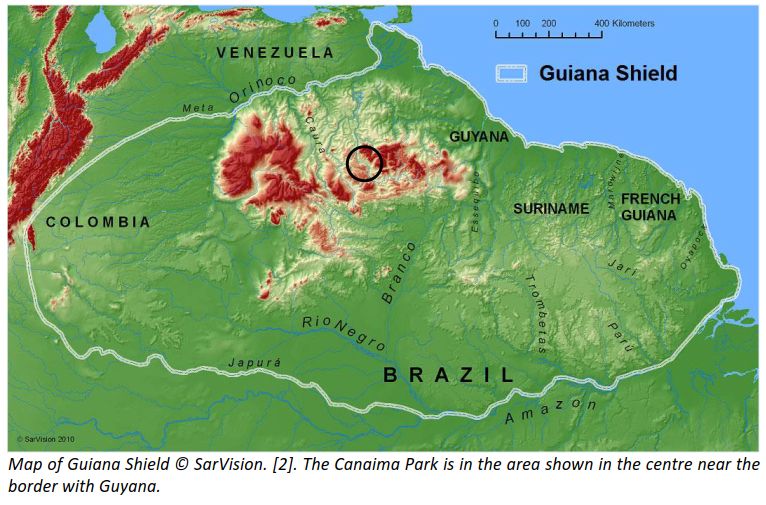
The THREAT: The major threat to this biodiversity is illegal gold mining that results in ecocide - the pollution and destruction of large areas of the natural environment because of human activity. The use of mercury and/or other poisonous chemicals destroys the homeland of indigenous people. As mercury is a highly toxic chemical, which does not break down but builds up, its use may easily be also a direct threat to human health, especially for pregnant women and infants, causing serious health problems, including changes in the nervous system, as well as brain damage. Mercury spreads out through the water and through the atmosphere. Mercury from the Guiana Shield is thought to be found in migrant birds in northern Canada and in the Arctic Circle [3].
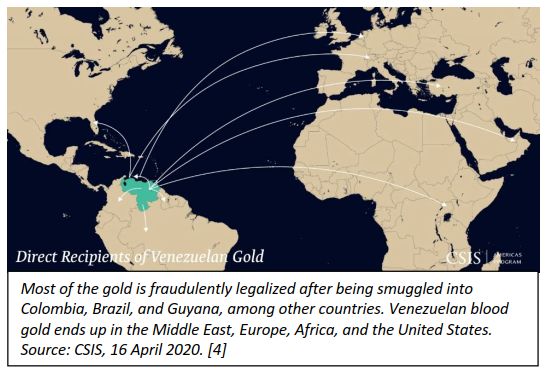
The gold mining in Venezuela either takes place on rafts on the river where hoses are used to destroy the embankments of the rivers and clear waters are being transformed into muddy pools full of the toxic mercury, or river terraces are transformed into mud pools to wash the gold. The drivers of the illegal mining are criminal miners, protected by Colombian guerrilla [4] and partly by the Venezuelan military and police itself, and smugglers that launder the gold through other countries [5]. Venezuela used to be a major oil exporter, but this source of income has been radically reduced as the whole oil exploitation infrastructure has been neglected and become dilapidated and international commercial sanctions are effective. Therefore, gold mining and the mining of diamonds and coltan in the southern part of Venezuela have become an important source of cash for the regime.
The LEGAL SITUATION: There are almost no official licencing procedures, or they exist only on paper but are not followed in practice [6]. The activities are carried out without any structured official system in place. In addition, Venezuela is not a party to the Minamata Convention on Mercury, which is an international treaty designed to protect human health and the environment from anthropogenic emissions and releases of mercury and mercury compounds. Parties to the convention are obliged to produce an action plan to include controls and reductions across a range of products, processes, and industries where mercury is used, released or emitted. Without the country obliged to even have such an action plan it is easy for the government to neglect all claims. Venezuela is part of the World heritage convention (the Canaima National Park), but this convention also has no, or minor enforcement means. Also, the OECD is aware of the possible gold smuggling and laundering and is advocating due diligence in dealing with problems arising with the production and trade of gold in Venezuela [7].
A possible future LEGAL ENFORCEMENT: Currently, Venezuela is being referred to the International Criminal Court (ICC) for crimes against humanity [8]. In addition, because of these crimes and the bad situation with food and medical care, millions of Venezuelans have fled to Colombia and some to Brazil and Guyana as well. S.O.S Orinoco and the organisation “Stop ecocide International” (SECI) are making the case that ecocide should be recognized as a separate crime against peace in the Rome Statute of the ICC given the large-scale destruction to the environment, which is caused by the mining. Indeed the EU and some countries of Latin America (Mexico, Chile) include ecocide as a crime in their laws / constitutions.
Satellite Earth Observation (EO) as an EVIDENCE COLLECTOR: Any law that may be enforced needs evidence for its application. Direct evidence for ecocide is being gathered in Venezuela by a few scientists who are able to test soil and water samples to ascertain the concentration of mercury in the mined rivers and forests. However, this is dangerous and probably not sufficient. Another way to collect evidence is by satellite based EO. This is the major aim of this project and the satellite based ASM-Alert tool to be developed. The tool should provide valuable data and evidence for the ICC, the OECD, the World Heritage Convention and other organisations and entities, which have been identified as potential primary and secondary end users of the tool.
>>> Read the complete project description including on how the ASM-Alert tool works >>>
ASM Alert Platform Website

Visit the website: https://asmalert.gaf.de/
VIDEOS

| INTRODUCTION | PART 1 | |
| About the Project * | Sample HR and VHR Imagery |

| PART 2 | Part 3 | |
| Introduction to the Thematic Layers | Ordering VHR Imagery * |
* Forthcoming
DOCUMENTS
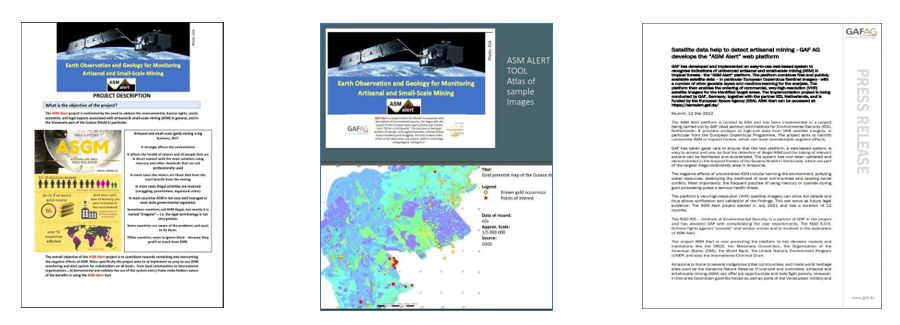
| ASM Alert | ASM Alert Atlas | ASM Alert |
| Project Description | Sample Images | GAF Press Release * |

NOTES
[1] See: UNIDO, “USD 180 million investment to tackle the hidden cost of gold”, 18 February 2019: https://www.unep.org/news-and-stories/press-release/180-million-investment-tackle-hidden-cost-gold and specific sources quoted in the infographic.
[2] Map of Guiana Shield by SarVision as published in Andrea Berardi, Jayalaxshmi Mistry, Céline Tschirhart, Elisa Bignante, Odacy Davis, Lakeram Haynes, Ryan Benjamin, Grace Albert, Rebecca Xavier, Deirdre Jafferally and Géraud de Ville, Applying the system viability framework for cross-scalar governance of nested social-ecological systems in the Guiana Shield, South America, Ecology & Society, VOL. 20, NO. 3 > Art. 42, 2015. https://www.ecologyandsociety.org/vol20/iss3/art42/
[3] See Arctic Council, “Mercury and Toxic Cocktails affect the Arctic Ecosystems, Wildlife and Human Health – How to take action?”, 23 October 2020. https://arctic-council.org/news/mercury-and-toxic-cocktails-effects-on-arctic/
[4] According to the Center for Strategic & International Studies “While the economic, humanitarian, and political crisis in Venezuela worsens, criminal groups—including gangs, Colombian guerrilla groups, and colectivos (paramilitary groups)—are competing for control of the country’s valuable mineral resources. These resources include bauxite, coltan, diamonds, and, particularly, gold. Illegal mining is causing irreversible damage to the environment, fueling human rights abuses, and creating significant security threats for Venezuela and the region”. See “Illegal Mining in Venezuela: Death and Devastation in the Amazonas and Orinoco Regions”. CSIS, 16 April 2020. https://www.csis.org/analysis/illegal-mining-venezuela-death-and-devastation-amazonas-and-orinoco-regions?utm_source=CSIS+All&utm_campaign=3fafe829b6-EMAIL_CAMPAIGN_2020_03_05_04_38_COPY_02&utm_medium=email&utm_term=0_f326fc46b6-3fafe829b6-
[5] See: Marshall Billingslea, Assistant Secretary for Terrorist Financing, U.S. Department of the Treasury presentation at an informal Arria-formula meeting of the Security Council that focused on the pervasive corruption in Venezuela that has led to instability and a humanitarian crisis, a key aspect of which is the current Gold Rush that is devastating the environment and indigenous peoples. 10 September 2018. https://sosorinoco.org/en/facts/illicit-business/video-clip-of-arria-formula-meeting-of-the-security-council-formula-on-gold-rush-in-venezuela/
[6] See: “How illicit business has thrived under the Maduro Regime in Southern Venezuela” https://sosorinoco.org/en/facts/illicit-business/
[7] See: OECD (2021): “Gold flows from Venezuela: Supporting due diligence on the production and trade of gold in Venezuela”. https://mneguidelines.oecd.org/Gold-flows-from-Venezuela-supporting-due-diligence-on-the-production-and-trade-of-gold.pdf
[8] The case has been brought by six members of the Organisation of American States (Argentina, Canada, Chile, Colombia, Paraguay, and Peru and under preliminary examination by the court’s Office of the Prosecutor since February 2018. In December 2020, the office reported that based on the information available during the preliminary examination it had found a reasonable basis to believe that crimes against humanity had been committed in Venezuela. See: “Venezuela, the International Criminal Court, and Impunity”. Human Rights Watch. 21 July 2021. https://www.hrw.org/news/2021/07/21/venezuela-international-criminal-court-and-impunity